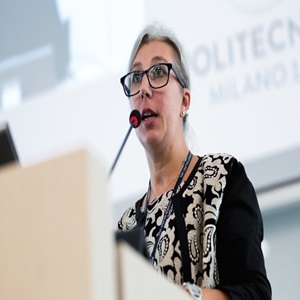Abstract Detail

Eleonora Aneggi
University of Udine, Italy
Abstract
Innovations in water technology are fundamental to finding solutions to the nowadays challenges: climate change, resource shortages, emerging contaminant, urbanization and sustainable development. Nowadays the use of conventional wastewater processes is becoming increasingly challenging mainly due to the presence of biorecalcitrant organic matter. An emerging technology is needed to deal with these highly concentrated and toxic non-biodegradable pollutants. Advanced oxidation processes (AOP) such as Fenton, Fenton-like and hybrid processes have been successfully employed for the treatment of different types of wastewaters. These processes typically rely on the generation of highly reactive hydroxyl radicals, which in turn attack the organics and degrade them. The conventional Fenton process generates large volumes of sludge that needs to be disposed, creating a serious environmental and economic problem. The heterogeneous Fenton process is the most viable solution for the treatment of wastewaters because it produces lower amount of sludge, the catalysts are recyclable and these features make this process feasible in terms of scalability and economics. However, there is a growing need for the development of new active catalysts to be employed in Fenton-like process, with extended life, improved activity and selectivity. Here, we focused on mono- and bimetallic formulations based on Co, Cu, Fe and Mn, which were investigated for the degradation of model liquid waste, a pharmaceutical pollutant (model solution of ibuprofen), three model organic dyes (methylene blue, rhodamine B and malachite green) and a landfill leachate which contains refractory organic compounds. A bimetallic Mn-Fe catalyst results the best formulation with an almost complete degradation of methylene blue and malachite green at pH 5 in 5 minutes and of rhodamine B at pH 3 in 30 minutes. The results suggest that these formulations can be applied for the treatment of broad range of liquid wastes comprising of complex and variable organic pollutants. The investigated catalysts have resulted to be extremely promising when compared to other systems reported in the literature, Copper-based catalysts have developed for the treatment of liquid wastes using a Fenton process, as a potential pretreatment before wastewater treatment line. Copper supported on zirconia exhibited a promising activity with an almost complete degradation of ibuprofen (98%) and 60% of mineralization, while working with the leachate a 67% of abatement of pollutants is obtained. In addition, several analytical techniques have been used for the assessment of the reduction of toxicity of the landfill leachate after Fenton process over copper-zirconia catalyst. UV–vis spectroscopy and AOX analysis have been coupled to achieve further insight into the degradation of contaminants. For the first time, the qualitative abatement of organic compounds is monitored through proton nuclear magnetic resonance (1H NMR) analysis, providing a new method for evaluating the effectiveness of the treatment. Spectroscopic techniques reveal that the Fenton process induces a significant abatement of the aromatic and halogen compounds (51%) in the landfill leachate with a reduction of the toxicity that has been confirmed by ecotoxicological test with algae. These results validate the investigated tool for a simple rapid preliminary evaluation of the detoxification efficacy Summarizing this study highlights the potential of different catalysts for the removal of organic compounds from liquid waste via heterogeneous Fenton-like process and a easy tools for the assessment of the reduction of toxicity.Biography
Dr. Eleonora Aneggi is a temporary researcher at the University of Udine. She graduated in Chemistry in 2001 at University of Trieste and in 2007 she obtained her PhD at the University of Udine. Her main scientific interests are catalytic processes, mainly related to environmental. Her research activity involves the development of advanced catalytic materials for atmospheric and water pollutants. She worked on various national and international projects. She has been the winner of numerous national and international awards. She is author or co-author of more than 70 scientific publications in top international journals.
